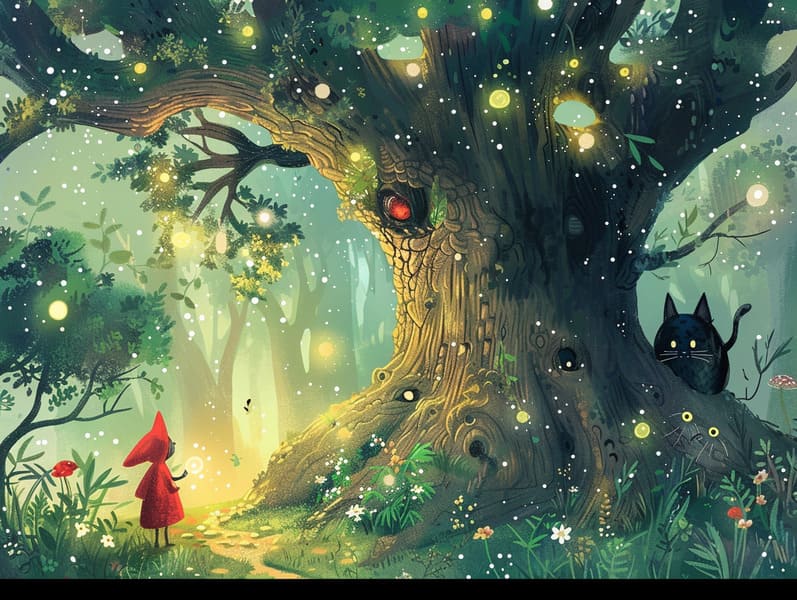The Start of Mythical Fairy Tales and Its Undying Loveliness.
The Start of Mythical Fairy Tales and Its Undying Loveliness.
Blog Article

Short fairy tales have enduring presence. These stories have been passed down from one generation to the next millennia before they were ever written down. They came from a variety of civilizations, including Indigenous traditions. They were initially passed along among adults, often carrying themes and messages aligned with the societal norms and beliefs of the time.
Jacob and Wilhelm Grimm, Jacob and Wilhelm (the Grimm brothers), were among the first to collect and release many of these beloved fairy tales. Their published works, "Grimm's Fairy Stories," included classics like "The Little Glass Slipper," "Hansel and Grethel," and "Snow-White and Rose-Red," which have since become staples in the world of classic fairy tales. Similarly, Andersen's imaginative stories, such as "The Mermaid's Tale," and "The Little Duckling," have captured hearts worldwide, establishing their place in the pantheon of classic fairy tales.
Despite their ancient origins, these tales remain as significant as ever, especially as kids' bedtime tales. These enchanting tales are now available in multiple formats, including vibrantly illustrated books, delightful animations, and web-based fairy tales.
Their enduring popularity can be connected to several magical reasons:
Valuable Lessons: Timeless fairy tales often teach important moral lessons. Narratives like "The Tale of the Boy Who Cried Wolf" teach the virtue of being truthful, while "The Hare and the Tortoise" stress the benefits of determination and meekness. These stories offer the young clear distinctions between ethical and unethical, helping to shape their moral compass in a mild yet profound way.
Empathy and Understanding: Traditional fairy tales frequently portray figures facing problems and hurdles, encouraging young listeners to comprehend with their struggles and cheer for their triumphs. For instance, "Beauty and the Beast" conveys the virtue of looking beyond appearances to acknowledge the inner being of a individual, enhancing awareness and understanding.
Cultural Awareness: Many traditional fairy tales are imbued with the cultural contexts from which they originated. Discovering these narratives can provide illuminating insights into different customs, fostering a sense of cultural respect and awareness.
Inventiveness and Imagination: The supernatural elements in classic fairy tales—magic wands—activate children’s visions and dreams. These stories carry readers to extraordinary realms, fostering creative ideas and a sense of magic that remains a lifetime.
Ancient fairy tales are not only charming but also teaching. They provide bewitching tools in cultivating various mind and heart abilities in little ones. When timeless fairy tales are read aloud, they nurture language development by offering new vocabulary and intricate sentence structures. This practice also fosters hearing perception and focus, as little ones follow the story, prepared to see what happens next.
Furthermore, contemplating the themes and characters of classic fairy tales can nurture cognitive skills and problem-solving abilities. Young readers learn to discern patterns, expect results, and understand cause and effect. These talks also support young ones utter their thoughts and feelings, enhancing their emotional intelligence.
In today’s digital era, the presence of free fairy tales online has made these tales more accessible than ever. Online platforms and apps share vast collections of famous fairy tales that can these guys be perused or listened via anytime, anywhere. Fairy tales recited are particularly favored, sharing an captivating way for children to be a part of these captivating stories. Read-aloud stories and voiced videos guide characters and settings to life, often supplemented by captivating soundtracks and soundtracks that elevate the tale-telling adventure.
The timeless appeal of traditional fairy tales lies in their ability to transform to modern times while staying true to their key morals. Contemporary adaptations of these tales often introduce more varied protagonists and modern settings, making them meaningful to today’s audience. However, the central morals of boldness, kindness, and fairness remain unchanged, continuing to touch audiences of all ages.
Timeless fairy tales also offer a sense of contentment and knowability. They feature a structured narrative with a straightforward beginning, middle, and end, often finishing with the closure of conflicts and the triumph of virtue over vice. This uniformity can be reassuring for young ones, extending a sense of assuredness in an variable world.
Ancient fairy tales continue to fascinate and enlighten new generations, maintaining their beauty and impact in modern society. As bedtime stories for kids, they supply a perfect blend of wonder and wisdom, encouraging moral values, empathy, and creativity. The existence of internet fairy tales and the sought after status of fairy tales told out loud ensure that these old tales remain reachable to new generations.
By guarding and distributing these stories, we continue to treasure the rich tapestry of cultural heritage and cultural heritage. Whether you are seeing a beautifully illustrated book, accessing a web-based collection, or listening on an audio story, the charm of ancient fairy tales is always within reach. These fairy tales point out of the unwavering nature of storytelling and its ability to draw us together across centuries and lands.
Even if you are accessing a beautifully illustrated book, viewing a web collection, or playing an voice book, the wonder of bedtime fairy tales is always within reach.
These narratives highlight of the persistent influence of storytelling and its ability to bring us together across eras and regions, weaving a spell that charms and informs alike.